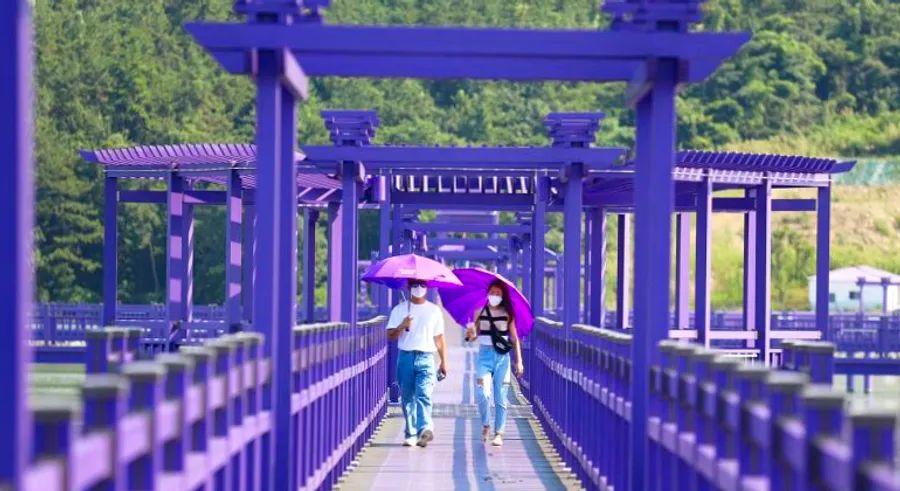Banwol Island in South Korea, with its stunning purple hues, is a photographer's paradise.

A once-rural South Korean farming village has reinvented itself, now serving as a perfect destination for the Instagram generation.
Banwol Island, located off South Korea's southern coast, earned its nickname 'The Purple Island' after transforming the roofs of around 400 buildings into a soft lilac. The island also features fields of lavender, violet-colored phone booths, and a striking purple bridge.
With international borders largely closed due to the pandemic, Banwol Island saw a surge in visitors. From June to August 2020, over 100,000 people flocked to the island, marking a 20% increase from the year before.
Since 2018, more than 490,000 tourists have visited Banwol Island.
The project, launched in 2015 as part of South Jeolla Province's effort to boost its tourism appeal, was inspired by the region's native purple bellflowers, or campanula, with the goal of creating captivating island getaways.
Banwol and Bakji Islands, with fewer than 150 residents combined, have embraced the purple initiative by cultivating crops like kohlrabi and beets. The local government has also planted 30,000 New England asters and expanded lavender fields across 21,500 square meters.
Visitors can easily hop between the two islands via a distinctive purple bridge.

To accommodate the influx of tourists, Banwol Island has added new amenities, including a cafe, two full-service restaurants (one on each island of Banwol and Bakji), bike rentals, and a small hotel. It takes about six hours to reach the island from Seoul by bus or private car.
Banwol's bold yet beautiful transformation seems to be paying off. With South Korea's strict two-week quarantine for returning travelers, many locals are opting to explore domestic destinations like Banwol.
Vibrantly colored towns have long attracted travelers, even before they became designed with social media in mind. Take Izamal in Mexico's Yucatan, for example, a 'pueblo magico' painted entirely yellow either to celebrate a visit from Pope John Paul II or to protect against a plague, depending on who you ask.
Chefchaouen, Morocco, was painted entirely blue by a Jewish community that settled there, believing the color brought good luck. Though the community has since moved on, the blue still brings joy to visitors.

1

2

3

4

5
Evaluation :
5/5